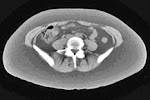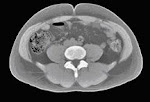The fat-burning cycle begins with hydration. Without proper hydration, the kidneys cannot function at their optimal level. Over 189 liters of blood per day is filtered through a pair of healthy kidneys.
The kidneys depend upon hydration in the form of ingested water to properly execute their functions. When water intake is too low, kidney performance suffers and the liver is taxed to help the waste removal process. Here, it is to be remembered that the liver’s job is only in part waste removal, but its primary job is to metabolize fat.
If the liver is not allowed to do its job of fat metabolization due to dehydration, fat-burning slows down considerably. In some cases it can virtually stop completely, halting any weight loss and damaging both sets of organs in the process.
This entire fat metabolism cycle hinges on hydration. When you consider the fact that you are holding on to excess water right now, it can become a bit confusing. How can you be dehydrated and hold water weight? The biochemical processes behind this are considerably complex, and this is just one example. Another is how drinking water releases stored water and yet manages to hydrate the body at the same time. At a layman’s level, it’s sufficient to know that water is a vital component of fat-burning.
Things become even more complicated when you consider that many fat-burning agents like caffeine are dehydrating agents as well. Coffee dehydrates the body, yet it can also accelerate fat loss, especially when consumed prior to exercise. Therefore, what is required is an increase in water intake for any dehydrating agents consumed.
For example, simply drinking a glass of pure water along with your coffee can offset the dehydration effects while still allowing caffeine to work its magic in the fat-burning process. The more dehydrating agents you consume, greater amounts of water are required.
…to be continued in Part II
Monday, April 27, 2009
Thursday, April 23, 2009
Walking for fat loss: the right posture and form
Walking is one of the most convenient and safe exercises to lose fat and stay fit. The quantum of fat loss may be lower when compared to other rigorous forms of exercise, but walking is definitely more comfortable and easy. The posture and form are the two critical considerations while walking and this post would help you get both of them absolutely right.
American College of Sports Medicine, one of the most respected authorities in the field of exercise, has issued the following guidelines to enhance the fitness walking experience. Read on, take a printout and memorize each point, so that next time you walk the fitness walk…
• Head Position: Head should always be kept up and centered, keeping the chin slightly elevated and the eyes looking forward. Just as with running, the jaw and face muscles should remain relaxed at all times.
• Shoulders and Chest: Shoulders should be kept back and relaxed. Just as with running, the body should be kept “tall.” The chest should be lifted upward slightly. This, with the shoulders held back, helps maintain a straight upright posture.
• Arm Action: Arms should be bent approximately 90-degrees at the elbow. They should be kept close to the body during the swing and should not cross the body. Crossing the body allows for torso rotation and loss of energy and forward momentum. The swing of the arm should come entirely from the shoulders. At the top of the forward swing, the hand should be about level with the breastbone. At the bottom of the backward swing, the hand should come back just behind the hip.
• Hand Position: The hands should never be clenched or held in a fist, which adds tension to the body. Hands should be relaxed and cupped, with slight contact made between the thumb and forefinger.
• Abdominals and Hips: The navel should be pulled in gently toward the spine. The hips should be “tucked” slightly forward, directly beneath the spine. This helps protect the lower back and aids in achieving a straight, upright position. The power of the walk should come from focusing on the straight forward-and-back motion of the hips, not the thighs.
• Knee action: The knee should follow a natural in-line arcing swing from the hip and should never be forced above its natural lift. The lower leg should swing in a natural forward arc from the knee. Forcing the knees beyond their natural swing could lead to over striding.
• Stride length: Stride length should be as close to natural as possible. Don’t over- or understride. Both can lead to increased risk of injury.
• Footplant: Since the forward momentum of walking is considerably less than when running, the focus on the footstrike should be to land firmly on the heel first. The ball of the foot follows, and the push-off should occur from the upper portion of the ball of the foot and the toes. However, just as in running, a minimal of inward or outward turn should be maintained throughout the duration of the walk.
• RELAX: Whether you are a runner or a walker, a novice or a veteran; following these guidelines can help reduce your risk of injury and lessen the loss of energy caused by tension and poor mechanics. This will allow more energy to be focused where it counts: relaxing and enjoying the exercise.
As with any exercise, a proper warm-up and cool-down, which should include both a cardiovascular and flexibility component is recommended.
In my next posts, I will be writing about the different intensity levels in walking, and how they have different effects on the body.
American College of Sports Medicine, one of the most respected authorities in the field of exercise, has issued the following guidelines to enhance the fitness walking experience. Read on, take a printout and memorize each point, so that next time you walk the fitness walk…
• Head Position: Head should always be kept up and centered, keeping the chin slightly elevated and the eyes looking forward. Just as with running, the jaw and face muscles should remain relaxed at all times.
• Shoulders and Chest: Shoulders should be kept back and relaxed. Just as with running, the body should be kept “tall.” The chest should be lifted upward slightly. This, with the shoulders held back, helps maintain a straight upright posture.
• Arm Action: Arms should be bent approximately 90-degrees at the elbow. They should be kept close to the body during the swing and should not cross the body. Crossing the body allows for torso rotation and loss of energy and forward momentum. The swing of the arm should come entirely from the shoulders. At the top of the forward swing, the hand should be about level with the breastbone. At the bottom of the backward swing, the hand should come back just behind the hip.
• Hand Position: The hands should never be clenched or held in a fist, which adds tension to the body. Hands should be relaxed and cupped, with slight contact made between the thumb and forefinger.
• Abdominals and Hips: The navel should be pulled in gently toward the spine. The hips should be “tucked” slightly forward, directly beneath the spine. This helps protect the lower back and aids in achieving a straight, upright position. The power of the walk should come from focusing on the straight forward-and-back motion of the hips, not the thighs.
• Knee action: The knee should follow a natural in-line arcing swing from the hip and should never be forced above its natural lift. The lower leg should swing in a natural forward arc from the knee. Forcing the knees beyond their natural swing could lead to over striding.
• Stride length: Stride length should be as close to natural as possible. Don’t over- or understride. Both can lead to increased risk of injury.
• Footplant: Since the forward momentum of walking is considerably less than when running, the focus on the footstrike should be to land firmly on the heel first. The ball of the foot follows, and the push-off should occur from the upper portion of the ball of the foot and the toes. However, just as in running, a minimal of inward or outward turn should be maintained throughout the duration of the walk.
• RELAX: Whether you are a runner or a walker, a novice or a veteran; following these guidelines can help reduce your risk of injury and lessen the loss of energy caused by tension and poor mechanics. This will allow more energy to be focused where it counts: relaxing and enjoying the exercise.
As with any exercise, a proper warm-up and cool-down, which should include both a cardiovascular and flexibility component is recommended.
In my next posts, I will be writing about the different intensity levels in walking, and how they have different effects on the body.
Subscribe to:
Comments (Atom)

